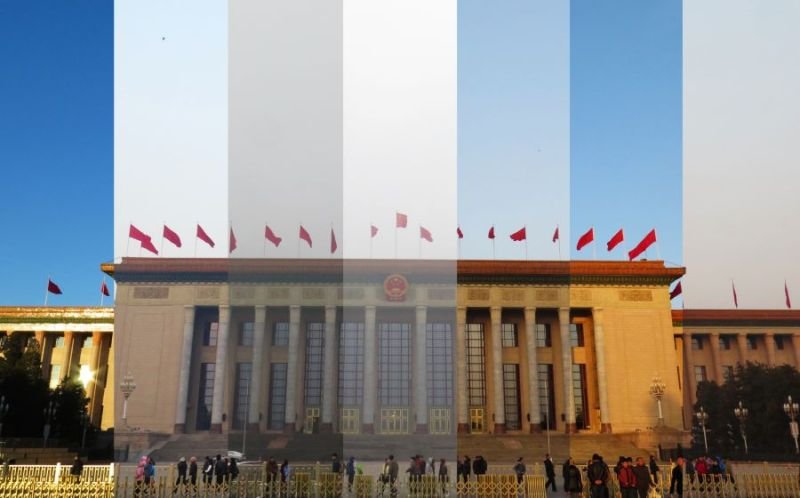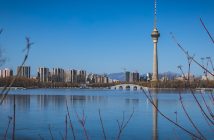Blame us for letting the cat out of the bag, but trying to figure out the confusion that is Beijing’s air quality is like trying to get a straight answer out of a guy named Schrödinger.
According to the local Bureau of Environmental Protection, the air quality in Beijing simultaneously improved and worsened over the first six months of this year.
This paradox is made all the more perplexing when considering that Beijing has undergone a year-on-year increase of average PM2.5 levels during this same time period while simultaneously experiencing its lowest PM2.5 levels in recorded history (that is, since 2012).

Confused? So are we, so we’ll admit that an analysis of the following statistics may not mitigate this unpleasant feeling.
Beijing PM2.5 levels for the first half of 2017 averaged 66 micrograms per cubic meter, constituting a 3 percent year-on-year increase from the same period last year. That’s bad.
And yet, these levels are 36 percent better than the average levels from back in 2013 because PM2.5 levels remarkably improved by March, leading to a record-breaking drop of 25 percent. That’s good.
But that’s not all. Beijing only had a total of 99 days in which the city’s air quality conformed with government regulations, eight days less than last year. The first half of the year saw 16 days of severe air pollution and one day of heavy ozone pollution. Again, that’s bad.

At the same time, Beijing experienced a 15 percent year-on-year drop in sulfur dioxide, a pollutant that primarily originates from vehicle exhaust. This decrease is likely thanks to the 27,500 new electric cars added to Beijing’s streets, making up the nation’s largest fleet of new energy vehicles, totaling 137,000.
PM10 levels rose to an average of 96 micrograms per cubic meter, a year-on-year increase of 16 percent. That’s bad. And while dust storms and pollen attacks are the most likely culprits, Global Times reports that the increase is mainly due to the 20 percent increase in citywide construction, taking up a massive 120 square kilometers. So … that’s good?
Things were not looking good last February or the month before when Beijingers had to suffer through seven consecutive days of air pollution rated above 200 AQI. And yet, that was also the time when the city pledged to spend RMB 18.2 billion (USD 2.6 billion) on pollution alleviation.

Are these measures working? As before, Beijing aims to reach an average PM2.5 level of 60 micrograms per cubic meter by year’s end, a comforting goal if it wasn’t twice the level set by the World Health Organization.
In the same way that Beijing smog affects the sensitive mucus-lining of our throats, we’ve been burned before. Back in the winter of 2016, we were so impressed with the city’s improved air quality that we called it “Mind-blowingly, lung-cleansingly, nostril-clearingly amazing.” Considering these latest conflicting results, we’re hesitant to be so optimistic.
At the end of all this, we can only suggest that you hang onto your trusty home air purifier, but also that the opportunity to open your hermetically sealed windows may have finally arrived. Take your pick.




